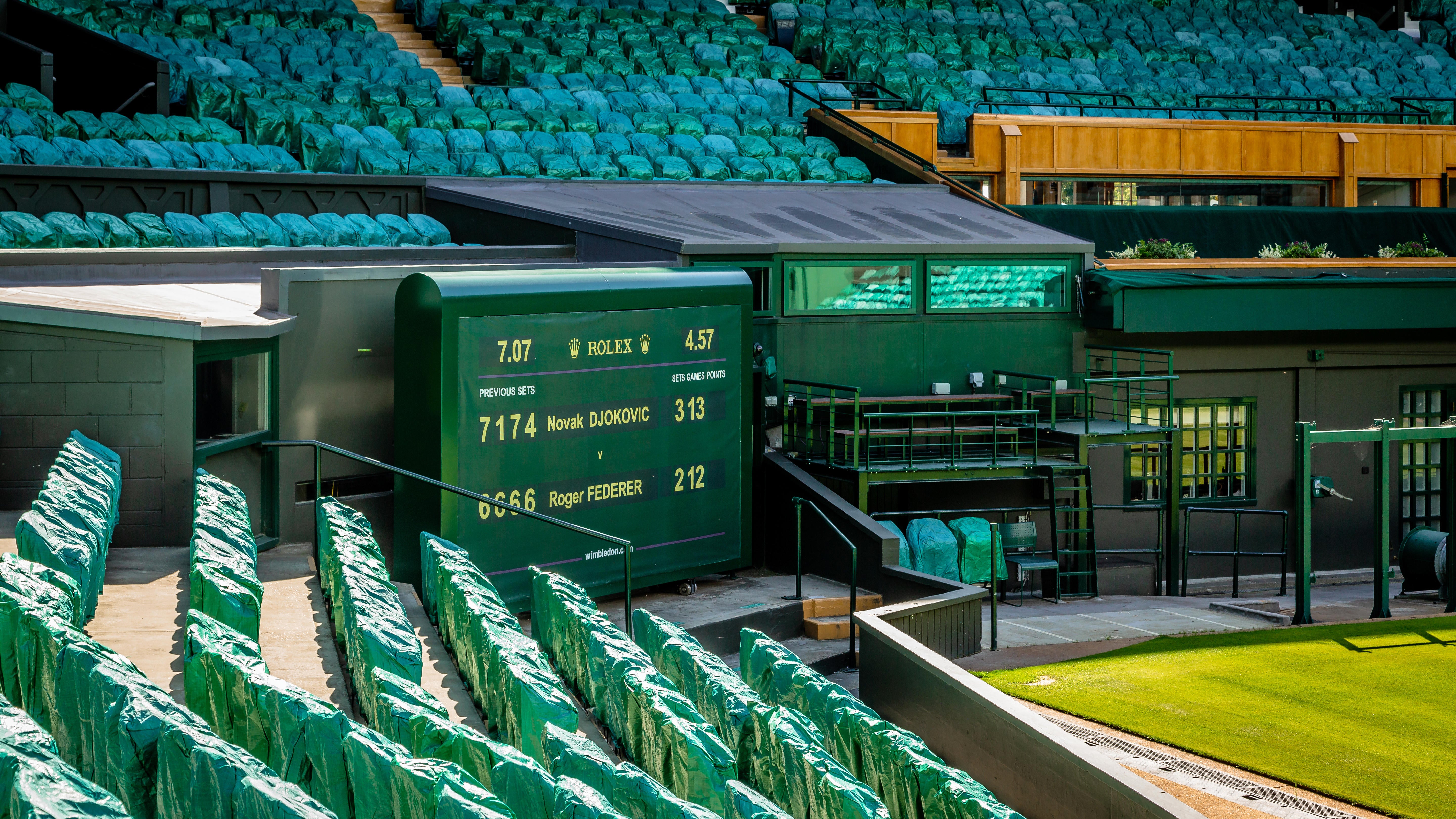Wimbledon set to fill seats for finals: 8 things we’ve really missed about capacity crowds
The end is nigh for empty seats.

Your support helps us to tell the story
From reproductive rights to climate change to Big Tech, The Independent is on the ground when the story is developing. Whether it's investigating the financials of Elon Musk's pro-Trump PAC or producing our latest documentary, 'The A Word', which shines a light on the American women fighting for reproductive rights, we know how important it is to parse out the facts from the messaging.
At such a critical moment in US history, we need reporters on the ground. Your donation allows us to keep sending journalists to speak to both sides of the story.
The Independent is trusted by Americans across the entire political spectrum. And unlike many other quality news outlets, we choose not to lock Americans out of our reporting and analysis with paywalls. We believe quality journalism should be available to everyone, paid for by those who can afford it.
Your support makes all the difference.Cancelled entirely in 2020, the Wimbledon Championships will come back with a bang at the end of this month, with full-capacity crowds announced for the Men’s and Women’s finals, and details to come for the rest.
Here are a few things we’ve missed about packed houses, in football, tennis and beyond…
1. The atmosphere
The loss lamented by almost every sporting event for the past year, live games need noise, tension, and drama. Call us sheep, but it’s far easier to care about something when thousands of other people are caring loudly at the same time. In an empty stadium, it’s easy to remember that it is, in fact, just a game.
2. The performances
When the premier league kicked off in the middle of lockdown, pundits lined up to ponder why some of the world’s best players had suddenly forgotten how to defend. One main theory emerged: defending is about concentration, and without the adrenaline of tens of thousands of people screeching at you, it was far, far easier to suffer a momentary switch off.
We’ll take the goal fests please and thank you, but in the long run, we welcome back conditions that allow players to perform at their best.
3. The camaraderie
In happier times, sporting events are among only a handful of modern contexts where it’s acceptable to talk to strangers, alongside nightclub smoking areas and asking for the time. Even under normal circumstances, fan conversation can be loud enough to be picked up by the TV cameras, and in an empty, echoing stadium, it’s not a risk worth taking.
4. The familiarity
 Centre Court Lol GIF by Wimbledon - Find & Share on GIPHY" srcset="https://media0.giphy.com/media/WgO8mbblOSpwbmNl6x/giphy.gif 480w, https://media0.giphy.com/media/WgO8mbblOSpwbmNl6x/giphy.gif?w=320 320w, https://media0.giphy.com/media/WgO8mbblOSpwbmNl6x/giphy.gif?w=480 480w" sizes="(max-width: 480px) 100vw, 480px">
Centre Court Lol GIF by Wimbledon - Find & Share on GIPHY" srcset="https://media0.giphy.com/media/WgO8mbblOSpwbmNl6x/giphy.gif 480w, https://media0.giphy.com/media/WgO8mbblOSpwbmNl6x/giphy.gif?w=320 320w, https://media0.giphy.com/media/WgO8mbblOSpwbmNl6x/giphy.gif?w=480 480w" sizes="(max-width: 480px) 100vw, 480px">
If the Wimbledon final is a fixture in your diary, we can only assume you attend some very interesting dinner parties. But for lots of normal people, club competitions are part of the weekend furniture – the chants, the pre and post-game, the sense of routine. We’ve missed sport during the pandemic, but we’ve also missed the ecosystem around it.
5. The availability
90,000 seats at Wembley 50,000 seats at Hampden Park, and 15,000 seats in the Centre Court at Wimbledon. Good luck occupying any of them when capacity is locked at between 20 and 50%.
6. No fake crowd noise
The 2020 US Open and Premier League were just two of the global competitions to adopt fake crowd noise, and although we can’t fault the technology, the concept divided audiences.
There were editing flaws – you could drive a bus through some of the gaps between goals and cheers – but most of all, it was just a bit weird. Artificial normality is – by definition – not very normal.
7. The entertainment value
Remember the outlandish outfits, the shirtless dancing, the beer snakes at the cricket and the Mexican waves at the football, or that one person who still shouted “Come on Tim” every time Andy Murray played. Pity the poor camera operator, who, during a dull patch in the game, could no longer pick out a person in the crowd struggling to do up their coat.
8. The catharsis
When the World Snooker Championship became the first tournament to open at full capacity last month, the eyes of the nation were watching, not because they’d developed a sudden passion for potting, but because it symbolised a step out into the light.